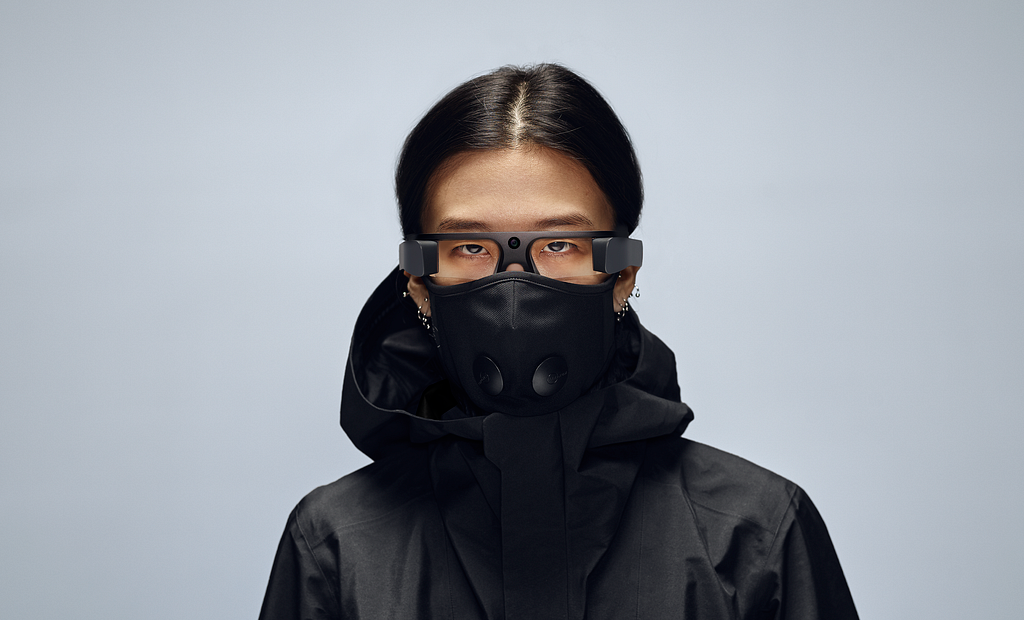Sami Niemelä
Creative Director, Innovation Coach

Creative Director, Innovation Coach

This year we made an industrial design project with a Chinese company called LLVision Technologies of Beijing. Although the name may sound strange to the European, LLVision is the global number one in its category with its glasses. LLVision’s glasses are used, for example, by the Chinese police forces, which use it to help catch criminals with help of face recognition. The police just look at the crowds, and the glasses scan the faces (LLVision says they’re able to recognize individuals from a pre-loaded database of 10,000 suspects in just 100 milliseconds). Once the glasses detect a suspicious person, the officer will get all the data projected on the lenses, right in front of his eyes. The same glasses are used by traffic police, that by scanning the traffic can identify if the car is stolen or unchecked. Europeanly, such a development could be rightly worrying, but I myself want to believe that technology is always used to do more better than evil.

For years, AR has gone through these development steps and has already established itself in the future market. Everybody remembers Google Glass, and how it was bursting with amusement, but the product was nevertheless true for the future. When years of hype have been around VR, AR has evolved as a secret. At the moment, it seems that VR will be mainly an individual experience and will largely serve the entertainment industry in its immersion, while AR is more related to the place, and provides a valuable additional layer between the surrounding reality and the user. It is predicted that AR will drive past VR in market size (most predictions using an approximate ratio of 4:1), as AR will be largely driven by marketing forces. In fact, the AR layer is going to be in great competition for advertising space in the future because it reaches the user’s field of view according to geolocation (buildings, streets), and the marketer can even know where the user looks (retail spaces, shop windows). Already now, many digital marketing companies are focusing solely on developing AR content.

However, I am fascinated by the role of the user as a content producer in AR. Imagine that one day, almost all people will be wearing AR glasses — just as they have a smartphone in their pockets today. This is, of course, a completely hypothetical vision, because AR technology still has many obstacles to overcome before we get there — but let’s play that it would be so. AR glasses currently have a camera that captures the world seen by the user, and AI helps the device understand what it sees. Now, let’s bring in Google Maps, which is already a familiar tool for everyone. Imagine if these two would unite in one scenario, and all people would automatically portray everything what they saw. All the footage would be uploaded automatically into the cloud, which then would stitch a unified 3D image from the image stream, and in return, the user could get a micropayment on the blockchain for publishing the content. That is, everyone would capture everything they saw, and all access rights to the images would be shared. The world of such would be a massive hole cheese, but the picture would focus a moment from the moment.
Let’s take a practical example which was invented by my friend Juha in a hotel room during a rainy Easter in Warsaw. Where today you can look at pictures of a hotel room in Tripadvisor, imagine getting in the room virtually and peeping into the closet and even under the bed if somebody ever had done the same with his glasses on. Adding more momentum, let’s include advertising. What if you could virtually explore the origin of the blanket on the hotel room bed from a pop-up in the corner of your eye, and then buy a similar one for yourself by clicking on the link. Or a picture on the wall. By scaling this idea, one can see the vision of the future, where the whole world is documented, and through your glasses you can visit anywhere in the world where man has ever been. And, of course, you can also buy anything and everything, because in this future everything is for sale.
This vision is also scary in many ways, and it leaves many practicalities unresolved, but the purpose of the vision is to raise questions and debate. We at Nordkapp want to be an active player when it comes to imagining the future and defining the world we’ll be living in tomorrow.
https://www.statista.com/statistics/591181/global-augmented-virtual-reality-market-size/
https://www.theverge.com/2018/2/8/16990030/china-facial-recognition-sunglasses-surveillance
The future will be seen through lenses was originally published in Future is Present Tense on Medium, where people are continuing the conversation by highlighting and responding to this story.